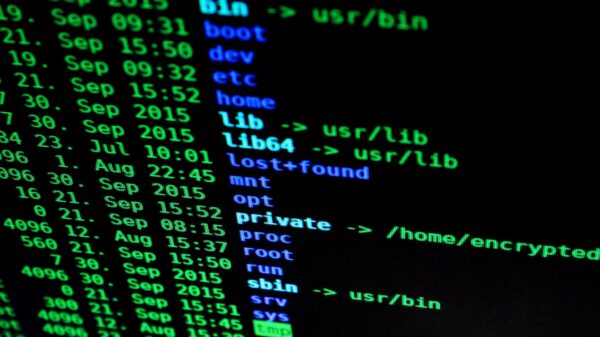In the fast-paced world of modern education, technology is becoming an increasingly integral part of the learning experience. From online classes to digital textbooks and interactive simulations, technology has revolutionized the way we approach education. But what exactly is its role in shaping our minds and preparing us for the future? In this blog post, we’ll explore how technology has transformed modern education and why it’s such an essential tool for learners of all ages. So buckle up and get ready to discover the exciting ways that tech is changing the face of education as we know it!
Introduction to the Role of Technology in Education
Technology has drastically changed the landscape of education. In the past, learning was limited to face-to-face interaction and textbooks. Today, technology has opened up a world of possibilities for educators and students alike.
Technology can be used in a number of ways to support learning. For example, online resources such as Khan Academy offer free educational content that can be accessed by anyone with an internet connection. Social media platforms like Twitter can be used to connect with experts and other learners from around the world. And tools like Google Classroom make it easy for teachers to create and manage digital classrooms.
The role of technology in education is not always positive, however. Some critics argue that too much technology in the classroom can be distracting and even harmful to students’ learning. Others worry that technology will eventually replace human teachers altogether.
Regardless of the debate, there’s no denying ing that technology is here to stay. As the tools and resources available for educational use continue to evolve, the role of technology in education will undoubtedly become increasingly important.
Benefits of Technology in Education
There are many benefits of technology in education. Technology can help students learn in a more engaging and interactive way. It can also help teachers to better assess student understanding and provide feedback more quickly. Additionally, technology can help make education more accessible for all students, including those with learning disabilities or other challenges. Technology can help connect students and educators with resources and experts from around the world.
Examples of How Technology is Used in Education
There are a number of ways in which technology is used in education. One way is to use technology to help with the delivery of instruction. This can be done in a number of ways, such as using video conferencing to allow students to attend classes from remote locations or using online learning platforms to provide students with access to course materials and resources. Additionally, technology can be used to facilitate communication and collaboration between students and educators. For example, online discussion forums can be used for class discussions, or group projects can be completed using online collaboration tools.
Another way that technology is used in education is for assessment purposes. With the advent of online testing and assessment tools, it is now possible for educators to more easily administer tests and quizzes, and track student progress. Additionally, these tools can also be used for formative assessments, which can provide educators with valuable feedback about what students are struggling with and what areas need more attention.
Technology is also being used increasingly in education research. By collecting data on how students interact with educational technologies, researchers can gain insight into how these technologies are being used and what impact they are having on learning outcomes. Additionally, technological advances have made it possible to collect data at a much larger scale than was previously possible, allowing for more robust research studies.
Finally, technology can also be used to provide students with additional support. For example, intelligent tutoring systems can help students understand difficult concepts or offer personalized instruction. Additionally, adaptive learning technologies can tailor instruction to the individual needs of each student.
Challenges of Using Technology in Education
There is no doubt that technology has revolutionized education. It has made learning more engaging and interactive. However, there are still some challenges when it comes to using technology in education.
One challenge is the cost of purchasing and maintaining technology. Educational institutions need to invest in quality hardware and software, and they also need to train staff on how to use it effectively. Another challenge is that not all students have access to technology at home, which can put them at a disadvantage. Additionally, some students may be more comfortable with traditional methods of learning, such as books and lectures. And finally, there is always the risk of technical problems, which can disrupt lessons and frustrate both students and teachers.
Despite these challenges, technology can be a powerful tool for improving the educational experience. It can help create more engaging and interactive lessons, and enable students to access information quickly and easily. With the right resources and training, educators can leverage the power of technology to its fullest potential.
Strategies for Overcoming the Challenges
One of the biggest challenges facing educators today is the use of technology in the classroom. With so many different devices and platforms available, it can be difficult to know where to start. Here are a few strategies for overcoming the challenges of using technology in education:
1. Start small and build up gradually. Don’t try to do too much at once. Start with a few simple applications or platforms and then add more as you become more comfortable.
2. Get training and support from experts. There are plenty of resources available to help you get started with using technology in your classroom. Seek out professional development opportunities and utilize online resources to learn more about integrating technology into your teaching.
3. Plan ahead and be prepared for technical difficulties. Even the most experienced users of technology can run into problems from time to time. When possible, plan ahead and have backup plans in place in case of technical difficulties.
4. Be flexible and willing to change your plans if necessary. Technology is constantly evolving, so be prepared to change your plans as new technologies become available or as your students’ needs change over time.
5. Encourage students to take responsibility for their learning. Encourage students to use technology independently and give them opportunities to explore different applications and tools on their own time.
By following these strategies, educators can overcome the challenges of incorporating technology into their classrooms and reap the many rewards that come from using technology in education.
Conclusion
In conclusion, technology has revolutionized modern education and transformed the way we learn. With the ever-evolving advancements in technology, students have access to a wealth of information with just a few clicks. Technology has allowed for more efficient communication between teachers and students as well as personalized learning experiences that can be tailored to each individual’s needs. It is without a doubt that technology will continue to play an integral role in education for many years to come.










